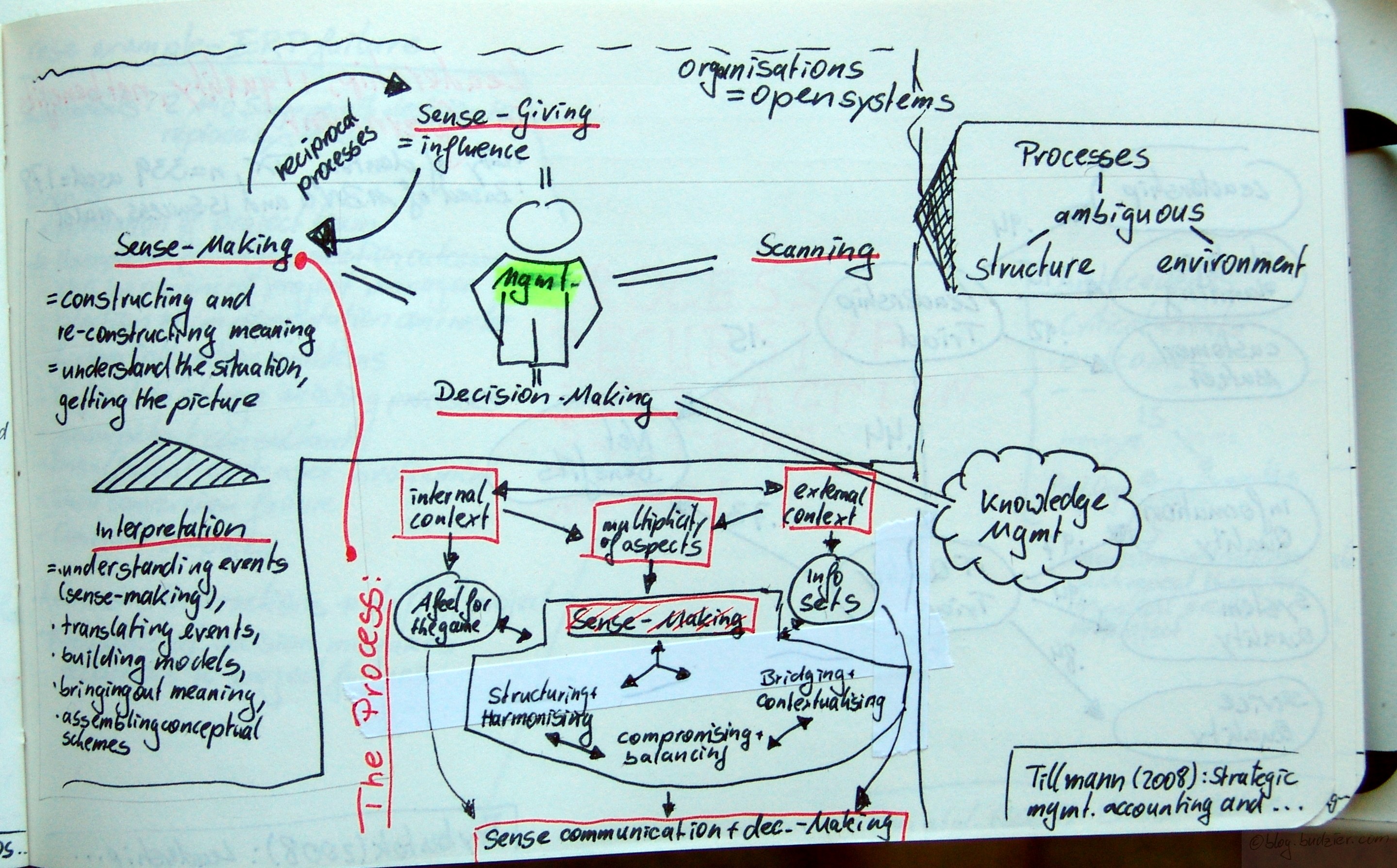Tillmann, Katja; Goddard, Andrew: Strategic management accounting and sense-making in a multinational company; in: Management Accounting Research, Vol. 19 (2008), No. 1, pp. 80-102.
http://dx.doi.org/10.1016/j.mar.2007.11.002
Tillmann & Goddard analyse in a large German multi-national corporation how strategic management accounting is used and perceived. This is interesting as insofar they explore how managers work and get decisions made. The authors follow an open systems paradigm, which conceptualises the organisation as a set of ambiguous processes, structures, and environments. In such the manager is operating. Furthermore Tillmann & Goddard identify 4 major typically managerial activities (1) Scanning, (2) Sense-Making, (3) Sense-Giving, and (4) Decision-Making.
Sense-Making is of key interest to the authors. Sense-Making can be understood as constructing and re-constructing meaning, or simply as understanding the situation and getting the picture. Understanding is inherently linked to interpretations of real world events. In order to make-sense of events, simplification strategies are employed, such as translating, modelling, synthesis, and conceptualising/frameworking.
Moreover the authors propose a 3 step process model of sense-making.
- Input – internal context, multiplicity of aspects, and external context which are individually internalised as information sets and ‚a feel for the game‘
- Sense-Making – structuring & harmonising, compromising & balancing, and bridging & contextualising
- Output – sense communication and decision-making
